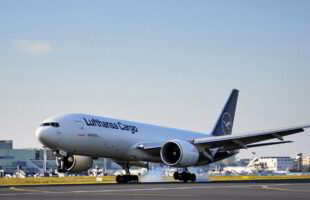
Badrinath Setlur

Over the last few years, the shipping industry has been significantly impacted by macroeconomic issues. Faced with challenges such as volatility in fleet utilization, fluctuating freight rates and consolidation, shipping companies must transform themselves. In an ever-evolving data and technology-intensive environment, a critical avenue for shipping companies to compete and win is through digital transformation.
Dynamic manufacturing value chains have caused shipping companies to rethink the strategies they have so far adopted to respond to disruptions in trade and changes in market behavior. Moving ahead, it will not be sufficient for shipping companies to focus on merely transporting goods. In order to assert themselves against the competition and operate successfully, shipping companies will also need to start embracing ‘connected’ shipping.
While most companies recognize the significance of connected shipping, they need a structured roadmap to embark upon this journey. This is borne out by a Cognizant study of shipping CXOs, technology providers, and analysts, meant to understand industry priorities and challenges around e-commerce and digital initiatives. The study highlights that an IT roadmap for shipping companies to stay connected must consist of the following steps:
- Assess current capabilities and business priorities.
Around 40% of the companies surveyed revealed that their major challenge was focusing on competing priorities for investments, such as procurement of assets, including vessels, containers, and Material Handling Equipment (MHE), and other capital-intensive purchases. Additionally, 44% of respondents also highlighted inadequate IT infrastructure and implementation gaps as challenges to e-commerce adoption.
Companies should form a cross-functional team to assess current or planned ecommerce work (the study indicated that most companies were yet to even realize that the journey had already begun). This will help them capture the work underway, results already achieved, new initiatives planned across the enterprise, gaps that are required to be filled, and investment needed to build a business case.
- Develop an e-commerce roadmap using a maturity framework.
Nearly all respondents reported adopting e-commerce transformation to stay ahead of the competition and meet ever-changing consumer demands for end-to-end visibility across the value chain. Around 70% of the surveyed shipping companies said social media data could help improve their operations and services. Companies said they understood that increased visibility (55%) and on-the-go access (48%) were the key differentiators in customer experience that could be realized by adopting digital transformation. More than 65% reported that they had already embarked on the transformation journey, while around 60% reported re-starting their IT setups with in-house products and customizations to suit their business operations.
While current state assessment can help establish basic capabilities in process standardization, data integrity and visibility before making further investments, a maturity framework can serve as a crucial guideline for shipping companies in better assessing their current capabilities and planning ahead. Each of the critical functional processes can be evaluated around four key levels of maturity, starting from the basic stage (‘defined’), spanning competencies in key functional areas (‘managed’ and ‘optimized’) and culminating in a fully mature process (‘transformed’). The ‘transformed’ stage will be a function of business priorities and requirements, so each process need not be there. Current capabilities and business priorities, assessed against a maturity framework, can help chart a meaningful roadmap.
- Define business process changes for effective integration with partners.
The study showed that most order-to-cash functionalities are semi-automated, and leaning more towards manual mode of operations. Around 70% of the respondents reported that their booking, freight payments, and trade documentation processes were manual or semi-automated. Shipping companies should consider investing in automating common functional areas and facilitating data visibility. However, the study showed that stakeholders were wary of sharing price or rate information across platforms for fear of triggering price wars.
Companies need to identify those processes that are critical for their growth and productivity, and prioritize them for harmonization. Digital transformation is facilitated by partnerships that enable timely, accurate information sharing and visibility. Companies have to encourage collaborative business process management to support the exchange of information, events and documents, and enhance the experience of internal and external stakeholders.
- Develop an ROI-based approach to identify and prioritize initiatives.
Collaboration and customer experience management are key to driving innovation. Every respondent said that their company had earmarked specific budgets for building collaboration tools and advancing digital transformation. Nearly 60% of the respondents said that their IT spend on understanding customer expectations was about 1% to 5% of their overall IT budgets; 20% of the respondents spent in the range of 5% to 10%.
Companies can benchmark key performance indicators of their businesses to focus on the strategic goal of their transformation journey towards becoming digital enterprises. They can evaluate returns on investment for the various initiatives in the business case, obtain the necessary top management approvals, and execute on the developed roadmap.
The Way Ahead
A potential maturity framework should define key functions across the value chain — capacity planning and forecasting; order management; shipment planning and scheduling; and supply chain visibility to freight invoicing management and analytics. All four levels of maturity — define, manage, optimize and transform — will apply to each function for a process to become fully mature. A maturity model can help shipping players ‘stay connected’, specifically in the areas of e-commerce transformation, and manage customer expectations and IT infrastructure in order to navigate the shift to the digital era and build stronger, more agile and innovative businesses.







